This article is related to two previous ones. As you will see, the destruction of beauty (modern art), the destruction of families and identities (gender theory), and the destruction of religions show several similarities.You might already know a bit about my grandma and her witty remarks. I mentioned her in the two articles linked above. Something I didn't share with you yet, is her religious faith.
When I was a kid, raised by atheist parents, I found it difficult to understand why my grandma was going to church, why she was interested in the Pope's doings and sayings, why she was praying, why she had paintings of the Virgin Mary hanging on walls and a crucifix above her bed.
To be frank I found all this religious display a bit ridiculous. How could it have been different, when the only thing I had ever heard about the Church was its evil deeds: the Crusades, the Inquisition and, more recently, the pedophile priests.
Grandma's religious faith didn't decline with time. She's now 100 years old and still a religious person. Each time I come back from some medical check-ups, I tell her that the results are good and she's on the verge of tears because she's so relieved. She then tells me in a soft emotional voice: "I've been praying so much for you".
I was struck by our difference in beliefs. Things had changed so fast. Two generations ago most minds were permeated with religion while my generation at best ignored it, at worse despised it.
This introduction might give you an idea of the topic of this article. We will be dealing with religions, particularly Christianity. More specifically, how religions influence us and actually how any social/cultural environment, whether religious or not, influences us. We will see that a religious environment is far less detrimental for individuals and societies than the atheist and nihilistic creed that dominates today's world.
Our social/cultural environment is made of a set of beliefs, rules and norms that basically define what is good and what is evil. For a long time religions played a major role in the definition of those items. So our first step will be to have a quick glance at how the fundamental beliefs (i.e. the cosmogony, the way we see the world) evolved over time.
Origin of religion
Religions are old, maybe as old as man. Almost every civilization that has existed included some form of religion. Only a few groups like the Hazda people or some Pygmy tribes show little or no signs of religiosity. As far back as the upper paleolithic period, some form of religion seems to have already existed.
The religion of the Mother Goddess lasted for a very long time, almost 20,000 years, and it also covered most of the planet. Representations of the goddess were found in Europe, Americas, Africa, and Asia.
We can't be absolutely sure about the content of this religion because there's no direct evidence. The only material available is based on the interpretation of ancient myths, particularly Greek and Roman ones that seem to date back to the times of the goddess cult.
Those myths suggest the belief in an immanent Goddess, who permeated every aspect of creation: trees, mountains, water, clouds, you and me. The Universe was one, everything was interconnected (including probably human behaviors and cosmic events - that's the 'human-cosmic connection' that we will deal with later).
Relative to today, humans probably felt less individuated and certainly held more responsibility and respect towards the 'outside' world because they were part of the same living entity.
Antiquity
By the time of Greece and Rome, the cult of the goddess had disappeared. Maybe it was swept away by the cataclysms that marked the end of the Bronze Age. At this time, severe climatic, geological and archaeological changes occurred that wiped out civilizations in Egypt, Mesopotamia and Greece.

(© NASA)
Greeks and Romans had a religion based on a pantheon of male and female gods. There were gods for literally everything; every street, every building. Interactions between humans and gods were solely based on the respect of rituals. If individuals performed the right rituals, offerings, sacrifice, ceremonies, the gods would be appeased and even act in their favor, otherwise the gods would be angry and calamities would occur.
Notice that those early religions were devoid of any moral references. It was not about being good or evil. Greek and Roman myths describe gods that behaved like humans: they got drunk, fought, argued, cheated, etc. So religiosity was limited to averting the wrath of the gods through proper rituals.
There was still a sense of immanence however, the human-cosmic connection was still very present in people's minds. Chroniclers (the historians of ancient times) wrote endless texts about cosmic calamities (the gods' wrath) related to abuses perpetrated by the elites.
For example, chronicler Michael the Syrian structured each page of his chronicles as two columns. On the right he listed the political affairs and conduct of the elites, while the left was dedicated to natural catastrophes, the objective being to find some correlation between the former and the latter.
The Christian revolution
In the first century AD, Christianity emerged positing the existence of a single, male, remote god. That was a major break from the Greek and Roman pantheism.
But the real novelty introduced by Christianity was the creation of a set of positive moral values. Pantheism was solely based on rituals, Judaism depicted a God displaying negative moral values: jealousy, anger, blackmail, murder... the new Testament, on the other hand, conveys moral values that are almost opposite to the old Testament (the Judaic Bible): tolerance, honesty, humility, patience, compassion, kindness, charity, and above all, love. This is perhaps best exemplified by the beautiful and inspiring letter of St. Paul to the Corinthians on love:
If I speak in the tongues of men or of angels, but do not have love, I am only a resounding gong or a clanging cymbal. If I have the gift of prophecy and can fathom all mysteries and all knowledge, and if I have a faith that can move mountains, but do not have love, I am nothing. If I give all I possess to the poor and give over my body to hardship that I may boast, but do not have love, I gain nothing.Unlike the Old Testament, the New Testament is not so much about God than about a mythical hero, a new archetypal religious hero: 'Jesus Christ, Son of God', displaying mercy, compassion, love, intelligence, courage. These are the moral traits that would influence the Western world for the following two millennia.
Love is patient, love is kind. It does not envy, it does not boast, it is not proud. It does not dishonor others, it is not self-seeking, it is not easily angered, it keeps no record of wrongs. Love does not delight in evil but rejoices with the truth. It always protects, always trusts, always hopes, always perseveres.
Love never fails. But where there are prophecies, they will cease; where there are tongues, they will be stilled; where there is knowledge, it will pass away. For we know in part and we prophesy in part, but when completeness comes, what is in part disappears. When I was a child, I talked like a child, I thought like a child, I reasoned like a child. When I became a man, I put the ways of childhood behind me. For now we see only a reflection as in a mirror; then we shall see face to face. Now I know in part; then I shall know fully, even as I am fully known.
And now these three remain: faith, hope and love. But the greatest of these is love.
Saint Paul, 1 Corinthians 13:4-7
This was a powerful motif because most people are emotionally drawn to heroes. According to C.G. Jung, the hero is one of the twelve most fundamental archetypes. People have this deep need to emulate, imitate and identify with a role model.
Give them a good model and they will end up emulating those positive traits. Give them an evil model and they will end up emulating the evil traits.
With Christianity, it was not solely the fear of God's wrath that encouraged believers to behave, but also the desire to emulate the positive role model that was the mythical figure of Jesus Christ. Fear of hell, fear of calamities were present, but these were not the sole motivators any more. A new empowering source of inspiration had been introduced.
Christianity inspired the lives of most, if not all, members of Western civilization. This reign lasted until the 17th Century.
The nihilistic revolutions of the enlightenment
Unlike immanent religions, for the Catholic Church human beings were separated from God. Humans lived in a material world ruled by natural laws while a remote transcendent god intervened in the material world by performing miracles and supernatural feats. Admittedly, it took the Christian church some time to accept these natural laws, and even scientists like Giordano Bruno (who was also a Dominican Friar) were burned at the stake in part for proposing new (and accurate) scientific theories.
But eventually the Christian church's acceptance that the human realm was solely governed by natural laws laid the foundations for the expansive scientific progress that occurred during the Renaissance. It was the task of science to figure out those natural laws. Thus, after the 'medieval dark age' came the period of 'enlightenment', or so we were led to think:
You can, with some plausibility, represent the Renaissance as darker than the Middle Ages. Machiavelli, the Medicis, and the Borgias have long been regarded as sin incarnate in odious forms. Making all due allowances for exaggeration and perversion of truth, the Renaissance was not a golden age, and the dramas of horror are something more than the nightmares of a madman.The direct application of the enlightenment philosophy would only happen later with the wave of revolutions that swept through Europe (England in 1642, France in 1789, Russia in 1917) .
Potter, M., 'History, III The Renaissance', Lectures on the Harvard Classics. The Harvard Classics, 1909 - 14
The result of those revolutions was the destruction of the aristocracy, whose power and privileges were transferred to a new and far more nefarious elite (the bankers and the bourgeoisie).
An even more fundamental consequence was the destruction of the clergy. For example, during the French revolution priests were forced to relapse, thousands of monks were killed, nuns were raped, churches were burnt. Such atrocities were committed under the noble banner of 'liberty, equality and fraternity'.
Among the targeted groups (aristocrats, middle class, workers, peasants), the clergy suffered proportionately the greatest loss during what became known as 'the Terror', an apt name for a period of history that saw the killing of about 100,000 people.
This period marked the end of the old world permeated by traditional values: family, community, religion, art and the birth of a brave new world ruled by nihilism, materialism and individualism. Reason became the new religion:
Just as the sun replaces the earth as the center of our cosmos in Copernicus' cosmological system, so humanity itself replaces God at the center of humanity's consciousness in the Enlightenment.With the hegemony of reason, things became worse because nothing was left but reason. Moral values (good and evil, virtues and sins) or sentiments like faith or hope disappeared, and transcendence (entities and principles that are higher than human beings) was erased. Man, in his totality, was now considered a spirit-less, biochemical machine. This was the beginning of the era of generalized madness:
'Enlightenment', Stanford Encyclopedia of Philosophy, 20 August 2010.
The madman is not the man who has lost his reason. The madman is the man who has lost everything except reasonHowever, in order to convert individuals to the new, atheist, scientific cult, the elites had to prove its merits, at least for a while. Coincidentally the 19th century was marked by numerous technological breakthroughs, an acceleration of material progress, scientific discoveries and a widespread distribution of knowledge. That was enough to maintain the illusion of lasting progress and to enroll the last skeptics into this new materialistic cult.
Chesterton, Orthdoxy
A good dose of early age propaganda was also necessary to reshape those minds still deeply attached to religion.
In the old world the clergy managed much more than spiritual matters, it was in charge of the hospitals, the orphanages, and the distribution of free food to the poor. It also administered schools throughout the whole country. Most of those social achievements were destroyed by the enlightenment revolutions.
But the revolutionaries were smart enough to keep the schools. Secular power taking control of the education system gave them the possibility to change the content of the teaching and promote their atheist, nihilistic paradigm.
Official history claims that secularism created free schooling. That is not true. Secularism created compulsory schooling so that every single child's brain would be filled with the same propaganda. The real motivation was not teaching the masses but removing any remaining chards of religiosity from human hearts.
The new golden calf
In the first versions of the Universal Declaration of Human Rights, the Bible of the nihilistic revolutionaries, the word 'sacred' can be found, which is quite paradoxical for such a clerical document. It can be found once, and it is attached to the word 'property'. This phrasing was still present in the official 1848 version:
Property is an inviolable and sacred rightIndeed it was the beginning of the era of capitalists and international bankers. The sacred property also marked the beginning of materialism and consumerism.
UDHR - article 17 (1848 version)
While religion was being eradicated, a new creed was being planted in our minds. The Golden Calf was back in Babylon. The individuals were given a new idol, a never-ending search for instant gratification, an illusory quest of pleasure, where the individual reduced to being a hedonist slave runs after a promised happiness that keeps slipping between his fingers:
By asking for pleasure he lost the chief pleasure, for the chief pleasure is surprise.Chesterton might have been even closer to the truth than he thought. Recent studies based on magnetic resonance imaging (MRI) measuring brain activity in response to pleasurable stimuli found that the nucleus accumbens — a region known as the brain's pleasure center — responded much more strongly when the event was unanticipated. This means that our pleasure center really cares about unexpected things.
J.K. Chesterton, Orthodoxy
Sex, entertainment, sport, food and consumption are different forms of the same drugs. Expected pleasure is this drug, ephemeral and coming with an ever-growing cost. The doses have to be increased to provide the same effect. After a while, the fix doesn't even provide pleasure but only hides for a while the pain, the emptiness, and the slow ruination of the soul. Hence the growing number of over-eaters, deviant sex fiends, drug addicts, 'extreme sports' adrenaline junkies, hardcore gamers, and TV junkies.
Destruction of knowledge
By the 1960s the mission was virtually accomplished; Christianity was weakened to the extreme. It's around this time that the destruction of education started. Science and technical knowledge had been promoted for a while in order to supplant religions. Now that religions were virtually dead, science and knowledge could finally be destroyed.
Educated minds, even if not religious anymore, have critical thinking, analytical skills, knowledge. They are able to see the lies of the psychopathic elites and oppose them.
So, for decades after decades, the education level was being deliberately reduced, producing new generations of individuals more ignorant than the previous ones. Of course, this dumbing-down was not an overt move; it was all done under the guise of 'equality'. The new education programs would allow 80% of teenagers to get a high school degree while more than 50% would reach college.
Who could argue against such a great 'progress'? Wouldn't it be wonderful to live in a world where each individual (whatever his skills and motivations) would hold a PhD? Maybe not so wonderful after all if this PhD means nothing anymore?
Did you know that according to a 2011 National Institute for Literacy report, a whopping 47% of adults in Detroit, Michigan are "functionally illiterate"? Unfortunately Detroit is not an isolated case. Over a period of eleven years [1992-2003] the proficiency of all approximately 37 million college graduates [in the US] has declined sharply.
In the Middle Ages, the ignorant Christian had at least a moral compass, a sense of good and bad, a respect for his world and his fellow men, both creations of God. In the 19th century, a knowledgeable atheist had intellectual skills and an ability to understand the reality surrounding him. But today, human beings have been reduced to the condition of ignorant atheists, having neither knowledge nor spirituality, the two fundamentals pillars on which one can build a sound identity.
Dividing and demonizing religions

Cover of Charlie Hebdo after Egypt mass shooting where 1150 people died.
The elites promoted two opposite forms of religiosity, neither of which being the moderate, spiritual one. On one side the secularized religions - some kind of alcohol-free beer - a religion so expunged of its fundamental precepts that it's not a religion anymore.
On the other side extremist religions - like the fundamentalist Christian or the radical Wahhabi movements - that are so literal, so proselyte, so intolerant that they're devoid of any of the positive features of traditional religions.
Meanwhile, the traditional forms of religions were demonized. Islam being insulted again and again by the mainstream media (see the cover on the right for example) under the guise of the 'freedom of speech', Muslims being depicted as terrorists (never mind that those alleged Muslim terrorists are so retarded that all they do is kill other Muslims).
Traditional Christianity received a similar treatment. For example, in 2013 activists of the radical feminist group, Femen, stormed a church in Paris. They were topless, simulated an abortion and urinated in front of the altar (all that in the name of the 'freedom of speech' and the 'right to sacrilege', apparently).
To give you an idea of the support provided by states to such an organization, Inna Shevchenko, the Ukrainian leader of Femen in France, received a political refugee visa within 7 months and a French passport 9 months later. Meanwhile their office in Paris is provided for free by the city hall.
To dare to point out that such acts have nothing to do with freedom of speech, that they are, in fact, pure hatred and provocation, is to be called a reactionary, a puritan, a traditionalist, while Femen are depicted as progressive, fearless, etc.
While we are on the topic, let's not forget to mention the unforgettable "Piss Christ", a crucifix submerged in a glass of urine, sold for $15,000. As if it was not enough, this great piece of art was the winner of a contemporary art award and received $5,000 in 1986 from taxpayers.
In a similar vein, the media repeatedly depicts Christian clergy as a den of pedophiles. Catholic priests are by far the most likely to be involved in molestation accusations in modern media. But, in real life, pedophiles are much more likely to be a teacher, babysitter, or family friend.
Did you ever wonder why 90% of pedophilia cases extensively presented by the media involve priests, while the testimonies of pedophile ring survivors mostly mention members of the elite who, incidentally, are the ones who control the very same media that equates priests with pedophilia?
The power of external influences
At this point we have a better vision of how our 'modern' beliefs and norms evolved over time. When put side by side, the contrast is striking. We shifted from a cultural environment defined by religiosity, responsibility, community, to a set of norms that are the opposite: materialism, nihilism, individualism.
We've shifted from a world dominated by priests who preached humility, honesty and love, to a world where the media promote hate, fear and consumerism.
A recent news article strikingly illustrates this inversion of values. A few weeks ago, a French Muslim student was banned from school for wearing a skirt that was too long. Beyond the obvious Muslim scapegoating, we can't miss the radical change in norms.
In the past, it was short skirts that were banned. But with the 60s 'revolution', which was little more than the beginning of the era of sexual promiscuity and drug abuse, short skirts became en vogue.
But does this inversion of norms and values really matter? Do social norms really have any influence on us? We are free to embrace them or not, right?
We all know about those cases of identical twins who were separated at birth but showed striking behavioral similarities. So is it only nature that matters, or does nurture also play a role?

In the experiment, students were asked very simple questions. In the control group, those not exposed to peer pressure, everybody gave correct answers.
The results for the other groups were interesting; when surrounded by people giving an incorrect answer, over one third of the subjects also voiced an incorrect opinion.
At least 75% of the subjects gave the wrong answer to at least one question, although experimental error may have had some influence on this figure. There was no doubt, therefore, that peer pressure contributes to conformity.
The important point is that we humans are social creatures. For millennia, our survival was dependent on our belonging to a group (tribe/clan/village). To be rejected and condemned to live alone in the wild was a death sentence. This strong desire to conform and belong has not changed. To belong, we must conform to the set of rules, norms, figures of authority and beliefs that define the identity of our group/society.
The Ash experiment illustrates the influence exerted by our peers, but when figures of authority like policemen, journalists or politicians are introduced, the compulsion to conform increases. That's exactly what was shown by the Milgram Experiment, which demonstrated the influence exerted by a figure of authority (a scientist in this case) on individuals.
In this experiment, subjects were told to administer electric shocks to a 'learner' at the instruction of a 'teacher'. The subjects sat in front of a box with electric switches on it. The switches displayed the voltage that was being delivered, and a text description of the level of pain ranging from 'slight' to 'danger severe', culminating in 'XXX'. In the original experiment, the subject could not see the 'victim' but could hear him.
Milgram thought that less than 1% would give the maximum shock (450-volt). The results were far from his predictions (see chart on the right).
100% of the subjects were willing to send up to 135 volts (the point at which the 'learner' asks to be released) through someone they didn't know. 80% were willing to go up to 285 volts (at which point the 'learner' emits agonizing screams). Over 62% were willing to administer the full 450 volts, despite the screams and the labels on the machine stating 'severe danger' and 'XXX'!
But what if you are aware of the manipulation? What if you know that there is an attempt to influence you? A case in point is advertising. If we don't pay attention to the ads, or know what they are up to, then they won't affect our behavior, right?
Unfortunately that is not the case because ads bypass our intellectual center. They directly appeal to our emotional center. The point of an ad is not to claim this car is faster or that detergent washes better, even if its message explicitly says so. The point is to make you associate the product with positive emotions, that's why there are beautiful women next to the car and a cute baby next to the box of detergent, while nice music plays in a background.
And it works. It works so well that studies show positive association ads will make you choose a product that you know perfectly well is inferior to its competitors. Unconscious emotional associations are stronger than sound intellectual arguments. I had a personal experience of this when my brother and I passed a billboard sign for Budweiser beer, where the bottle had the metal cap inverted to look like a crown and the slogan read "King of beers". My brother commented on it as we passed, saying: "do they really think that influences anyone?!". About 30 minutes later we found ourselves in a bar. I asked my brother what he would like, he hesitated for a moment, then said: "I'll have a Budweiser". I said nothing.

Do religions have a similar effect? Is it enough to tell someone to be good for him to be good? For example, does the compassion promoted in sermons, religious art or the New Testament make a Christian more compassionate?
Actually the influence of religions on people's feelings and behavior has been studied extensively. An excellent paper titled 'The Religious Shaping of Feeling' summarizes the results obtained in this field of research.
And the answer is yes, the values and the feelings carried by a religion have, of course, a great influence on how the believer wants to feel (desired/ideal state) but also (albeit to a lesser extent) on how the believer actually feels (actual state):
whereas cultural ideas and practices shape how people actually feel, they shape how people want to feel even more.Religiosity not only affects personal feelings (happiness, optimism), but also the way people feel towards the others (pro-social emotions).
Researchers have begun to examine whether engagement in specific religious practices increases the experience of prosocial emotions. Although much more work is needed in this area, several studies have linked the practice of meditation to increased empathy (Lutz, Brefczynski-Lewis, Johnstone, & Davidson, 2008; Shapiro, Schwartz, & Bonner, 1998), social connectedness (Hutcherson, Seppala, & Gross, 2008), and hope and optimism for anotherThe problem with most of those studies is that they are based on self-reporting or peer-reporting. So, is there only a change in perceived feelings or is there also a change in actual feelings? According to studies based on unbiased physiological measures, the latter seems to be true:
Although most studies of religion and well-being use self-report measures, which are vulnerable to various biases (e.g., social desirability), several have employed physiological measures to overcome this limitation. For example, in a recently published study (lnzlicht & Tullett, 2010), the authors examined levels of defensive arousal in response to making an error by using event-related potentials (ERPs). They found that when Christian believers were primed with religious icons, they showed less defensive arousal when they made errors than did nonbelievers. These findings suggest that when believers are thinking about their religion, they are less anxious during threat than nonbelievers. Other studies using physiological measures suggest that people who have undergone meditation interventions show neural changes related to the increased experience of positive, approach related emotions compared with wait-list controls (Davidson et al., 2003). These studies suggest that even when assessed by physiological measures, religious practice may promote well-being.One study conducted in 2008 by Oxford University was based on physiological measures of pain. Images of the volunteers' brains showed that in believers, an area of the brain that suppresses reactions to threatening situations lit up when they were shown a picture of painting of the Virgin Mary. The same picture didn't produce any effect amongst non-believer subjects. Overall experienced pain was 12% lower amongst believers.
The 'psychopath-ization' of individuals and societies
At this point one can wonder why religions have been so thoroughly undermined? Why such relentless attacks (corruption from the inside, destruction from the outside) against real religions? Here we reach the core of ponerization: the contamination of people and society by psychopathic traits.
Real religions respect life, while psychopaths aim to destroy life. Religions teach that others are our 'brothers and sisters' while psychopaths consider others as objects. Religions extol love, while psychopaths embrace hate. Religions advocate marriage and faithfulness, while psychopaths seek abusive sex and domination. Religions value honesty, while psychopaths lie and deceive as a rule. Religions convey the concepts of universal good and bad, while for psychopaths, that which serves their selfish interest is 'good' and that which opposes it is 'bad'.
As you can see, the values conveyed by most traditional religions are almost diametrically opposed to psychopathic 'values'. Since psychopaths want to submit us and impose upon us their deviant vision of the world (that's the core feature of ponerization), religious principles are a major obstacle to that process of subversion. Religions provide us with moral references that help us resist the ponerization of our minds and societies.
That is why psychopaths want to "free us" from religious sentiments.
Not surprisingly the leaders who genuinely fight the domination of the nihilistic empire support traditional religions, like Chavez praising the revolutionary Christ, like Putin supporting the Orthodox church or Pope Francis praising Putin's efforts towards peace.
Today, those people who still uphold or represent traditional values - family, community, religion, true heroic leaders, royalty - can see that their world is on the verge of annihilation.
That's why, despite their numerous differences, they increasingly unite under the same banner in order to defend what little is left from what makes us still human.
We should not be mistaken; this is a fight for our own souls. That's what psychopaths ultimately want. But the wolves wear sheep's clothing. Their nefarious objectives are hidden behind a politically-correct varnish, the Orwellian novlang ('newspeak' in English) that attempts to make black white, and vice versa:
"It's not destruction of religions, it's just secularism. It's not about the destruction of family, it's about marriage for all. It's not about pro-zionism, it's anti-racism. It's not about the destruction of beauty, it's modern art. It's not about insulting religions, it's freedom of speech. It's not about destroying identities, it's gender theory."
The road to hell is paved with good intentions. One has to see behind the lies, the propaganda, the twisted words in order to choose the right path.
Our established authorities don't command us directly to be greedy, afraid, individualist or materialistic. They use the novlang, mentioned above, or they indirectly instil those emotions.
The false-flag terror operations are a case in point, particularly in the US, where mass shootings have become almost traditional. The implicit message is rather clear: "be afraid, you need us, because you can be killed any time." Now shootings even happen in ultra-secure military bases, like Fort Hood in 2009 (you can be killed anywhere, even in the safest places). And shootings also frequently happen in schools, like in Sandy Hook (if the terror of being shot dead is not enough, now the threat is to shoot your children).
Religiosity and the Human Cosmic connection
One of the most extensive and scientifically sound psychokinesis experiments was conducted by Dr. Robert Jahn, Dean of the School of Engineering and Applied Science at Princeton, and Brenda Dunne, a developmental psychologist at the University of Chicago.
This research is one of the very few 'parapsychology' studies that has been recognized by a prominent scientific organization, the U.S. National Research Council, which concluded that the experiment was rigorous and that its results could not be explained by chance.
Over a 12-year period, Jahn and Dunne conducted nearly 2.5 million trials in which participants sitting in front of a carefully configured Random Event Generator (REG) would first attempt to 'will' the machine to produce more 1s than 0s, then the reverse, then try not to influence the machine in any way.
Jahn and Dunne found a cumulated deviation that was statistically highly significant because the results were compiled from millions of trials, with dozens of correlating experiments. The odds of these results being produced by chance being one in a trillion.
One set of experiments conducted by Jahn and Dunne was called ArtReg; the research team hypothesized that various images shown to the subjects would modulate the way they influenced REGs. Altogether they presented 24 different images to their subjects.
ArtReg failed to get significant overall results, but when they looked more closely at the results they discovered that 7 images out of 24 had produced positive REG outcomes. Those images were archetypal, ritualistic or religious ones.
Instead of focusing on individuals, Robert D. Nelson tested the effect of whole crowds and places on 'random' events. For that purpose he brought a portable REG (Random Event Generator) to all kinds of venues (stand-up comedy performances, concerts, theatrical events).
During chants, prayers and meditations performed in sacred places, he observed deviations far greater than any other ordinary PEAR study.
When studying this phenomenon further he discovered that both the sacred places (even without any activity) and the chanting (even performed in mundane places) exerted an influence. But, interestingly, the influence was maximized when the activity (chanting ceremony) and the location (sacred place) were coupled together, as if they were working in a synergistic way.
In my article about Gender Theory, I mentioned an interesting coincidence: while same-sex pairs had the most inhibited influence on Random Events Generators, homosexuality was increasingly promoted in Western societies. Meanwhile religions, whose features like icons, sacred places, chanting, and gatherings seem to increase the influence of people on random events, are undermined.
Negative bias against Christianity?
I have discussed this topic with some friends. Several times I was surprised by an almost automatic negative reaction against religions. Aren't we being told that the last 2,000 years of Judeo-Christian culture have shaped our minds? Shouldn't we therefore expect a positive bias towards religions?
The problem is that the reign of Christianity ended 200 years ago. Since then things have dramatically changed.
Let's look at the depiction of Christianity in the media: Christians in soaps are usually portrayed as weak, stupid, or bigoted. People opposing abortion are depicted as terrorists. The Vatican is presented as the center of a world conspiracy. Priests are usually mentioned in the context of pedophilia cases, Popes are depicted as insane, the only historical features of Christianity are the Crusades and the Inquisition, and the Christian view of prehistory is summarized by Adam and Eve, or even Jesus Christ living with dinosaurs.
Modern media exhibit a negative bias against religions, including Christianity. But does this negative bias have any influence on our perceptions?
While studies of negative bias against minorities like homosexual or black people are widely publicized, not much is mentioned about anti-Christian bias.
Such studies do however exist, and their results are rather clear. Some studies (Gartner, 1986; Lewis and Lewis,1985; O'Connor & Vandenberg, 2005), based on self-reporting, showed a negative bias against Christians, despite social desirability (social norms discourage prejudice against cultural groups so subjects tend to hide their negative prejudice in self-reports).
Even more interesting is the study titled 'Psychologist Bias in Implicit Responding to Religiously Divergent Nonpatient Targets and Explicit Responding to Religiously Divergent Patients', which, unlike most other studies, was based on automatic attitudes that were activated spontaneously - that is, without the participant's ability to use reactive and censoring processes to mitigate them.
About 400 psychologists were asked to evaluate the mental states of various patients. The study gave a diagnosis of religious patients as more mentally ill than their non-religious counterparts.
This negative bias is all the more striking when we understand that the literature does not support a correlation between religiosity and poor mental health. On the contrary, religiosity is associated with lower levels of depression (Smith, McCullough, & Poll, 2003) and anxiety (Bergin, Masters, & Richards, 1987), coping with chronic pain (see Rippentrop, 2005 for review), and rehabilitation efforts (Kilpatrick & McCullough, 1999).
Conclusion
Of course, like all other organizations, religions have killed and tortured people. The top of any powerful organization is inevitably ponerized.
The Inquisition is one proof of the Church's cruelty. But it should be put into perspective. According to recent research, only 1% of the 125,000 people tried by church tribunals as suspected heretics in Spain were executed; that is 1,250 people. And let's not forget that the Inquisition extended over a span of five centuries.
How do those figures compare with the millions of lives sacrificed on the altar of communism, capitalism or imperialism? So should we throw the baby out with the holy water? Since, like any other organization, the Church has been ponerized, should we reject all Christian values, or replace them with worse ones?
Those calamities were conducted in the name of Christianity but had nothing to do with traditional Christian values, in the same way that whole countries today are destroyed in the name of democracy or freedom, while those two concepts have nothing to do with imperial plunder.
'Traditional Christian values' are not perfect either. Commentators have mentioned the excessive submission ('love your enemy', 'turn the other cheek') and the guilt ('original sin'). However, despite all their imperfections and the corruption they've been subjected to, traditional religions still convey some important values: solidarity, charity, community, love. In this sense the materialistic, individualistic values that have been hammered into our minds are far worse than the religious ones that preceded them.
In an ideal world, we would embrace objective science and true spirituality. But we are not in Kansas anymore; in today's world, we have neither.
Christianity, though very imperfect, had a set of positive moral values that encouraged people to become better people. The materialism that dominates today's world proposes a set of negative values that bring out the worst in people. It's as simple as that.
What's wrong with living an individualistic life? Nothing really, if the individuals were truly happy with their lifestyle, since happiness is the main premise of this creed. But are they really happy? Suicides, depressions, anxiety-relieving drug consumption have never been this high.
Meaning
More importantly, the major difference between those two cultural milieus seems to circle around the notion of meaning. Through the perspective of hell and paradise and a mythical role model like Jesus Christ displaying exemplary behavior, Christian principles provided an incentive to be better, to adopt values like kindness or compassion. The very belief in God served as an impetus to accomplish greater things, to create, to materialize beauty.
Several studies have found that people place higher priority on goals that are deemed "sacred" (Emmons, 2005b) and that sanctified goals generate greater commitment, confidence, and investment of time and energy than do nonsanctified goalsThe modern-day nihilistic creed doesn't provide any such meaning to life, where gratification is the only 'value', the only goal we are supposed to achieve, like hamsters on a giant wheel.
Mahoney et al., Implications of Affect Valuation Theory 279, 2005
If there is no good and no evil, what's the point of thinking, making choices or efforts, saying 'no'? In a world devoid of hope, what's the point of living? In a nihilistic world devoid of beauty and transcendence, where can an individual find the motivation to create, to progress, to learn and improve?
Social life
The Church provided a sense of community and solidarity with collective gatherings, shared beliefs and practices. Christianity encouraged love for one's neighbor, treating others as brothers.
The materialist paradigm destroyed social bonds. By exploiting laborers and over-emphasizing consumption, individuals were forced to leave their villages, move away from their community, family and friends. Most of them ended up in gloomy isolated apartments in concrete grey cities where they didn't even know their neighbors.
How can we know our neighbors when we spend most of our time sweating for a miserable salary, then being told to fear the other by the media during our 'free time' watching the news? And even if we escape the influence of the fear-mongering, what do people today have to share with each other?
Individualism has put each person in his own bubble, oblivious to the other, solely focused on short-term personal gain, gratification and pleasure, perceiving the other at best as an alien, at worse an enemy.
But isolation comes with a high price. As demonstrated by a recent study conducted amongst 1,000 elders, loving relationships, not material gains, are key to contentment. In addition, out of 176 elders who were diagnosed with dementia, those with fewer social ties exhibited higher risk.
Civilization legacy
Pragmatists usually claim that only results matter. If we look at the results of 'modern civilization' compared to what came before, the differences are striking. Why did 90% of the greatest artists, like Leonardo, Michelangelo, Mozart, Beethoven or Shakespeare, live before the revolutions? Why were the greatest pieces of art, like cathedrals, paintings, carvings, music or poems, created before the 18th Century? If humans were such ignorant enslaved bigots back then, how did they create such marvels?
What is the legacy of the nihilistic materialistic civilization? Why is our great modern civilization - paragon of freedom, progress and intelligence - leaving behind only ugly buildings, chunks of plastic, modern art and superficial 'bling' extravaganzas?
Another major change introduced via the nihilistic revolutions directly relates to the very way we interact with the world. Christianity introduced a sense of wonder and gratitude. The world and life were a miracle, a gift from God. Respect and awe towards creation inspired people, led them to respect and emulate it.
For the materialist, the world is a boring thing. The cosmos is a giant clockwork, life is a series of biochemical reactions. A tree is nothing but a bunch of chlorophyll-producing cells. Materialists are bored by the world because they are oblivious to it and its true nature. They don't see its magic, its harmony. They've lost any sense of wonder, curiosity or gratitude. They see the world as a giant supermarket, here to serve their desire for personal, instant gratification.
Life is religion. Life experiences reflect how one interacts with God. Those who are asleep are those of little faith in terms of their interaction with the creation. Some people think that the world exists for them to overcome or ignore or shut out. For those individuals, the world will cease. They will become exactly what they give to life. They will become merely a dream in the 'past.' People who pay strict attention to objective reality right and left, become the reality of the 'Future.'
Cassiopaeans, 09-28-02

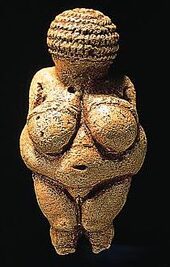
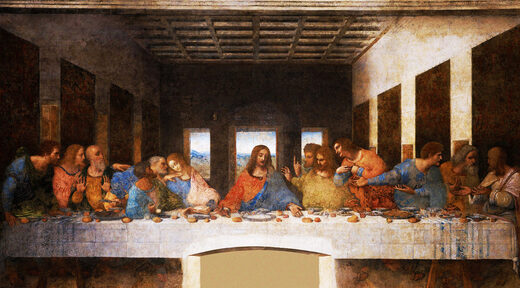
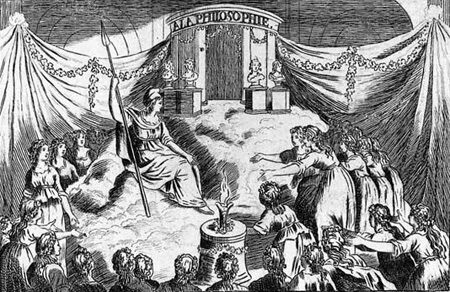
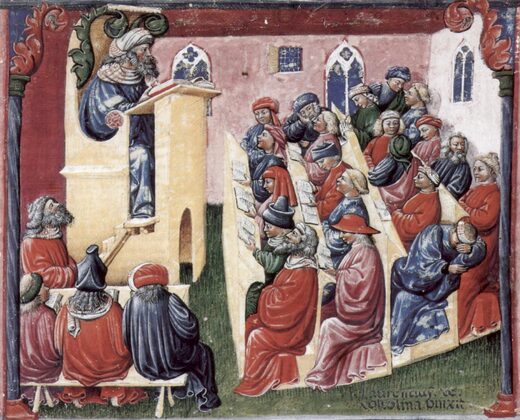
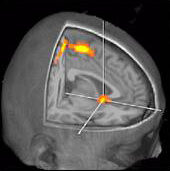


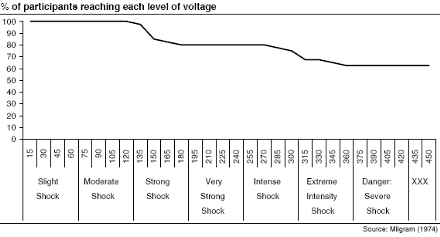
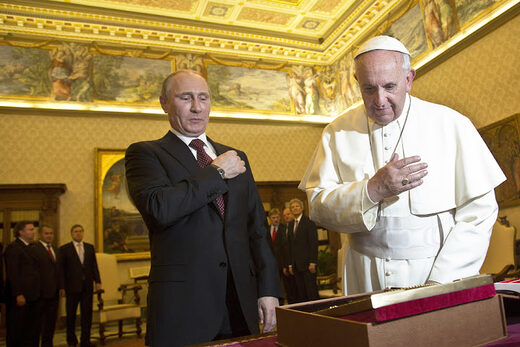

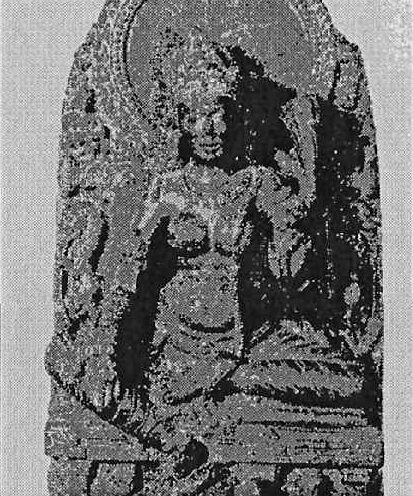


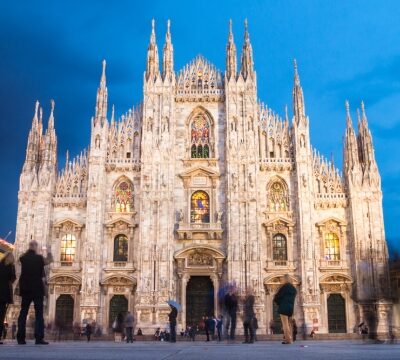



This was very informative and open-minded about history and Christianity, you don't see a lot of that now a days.